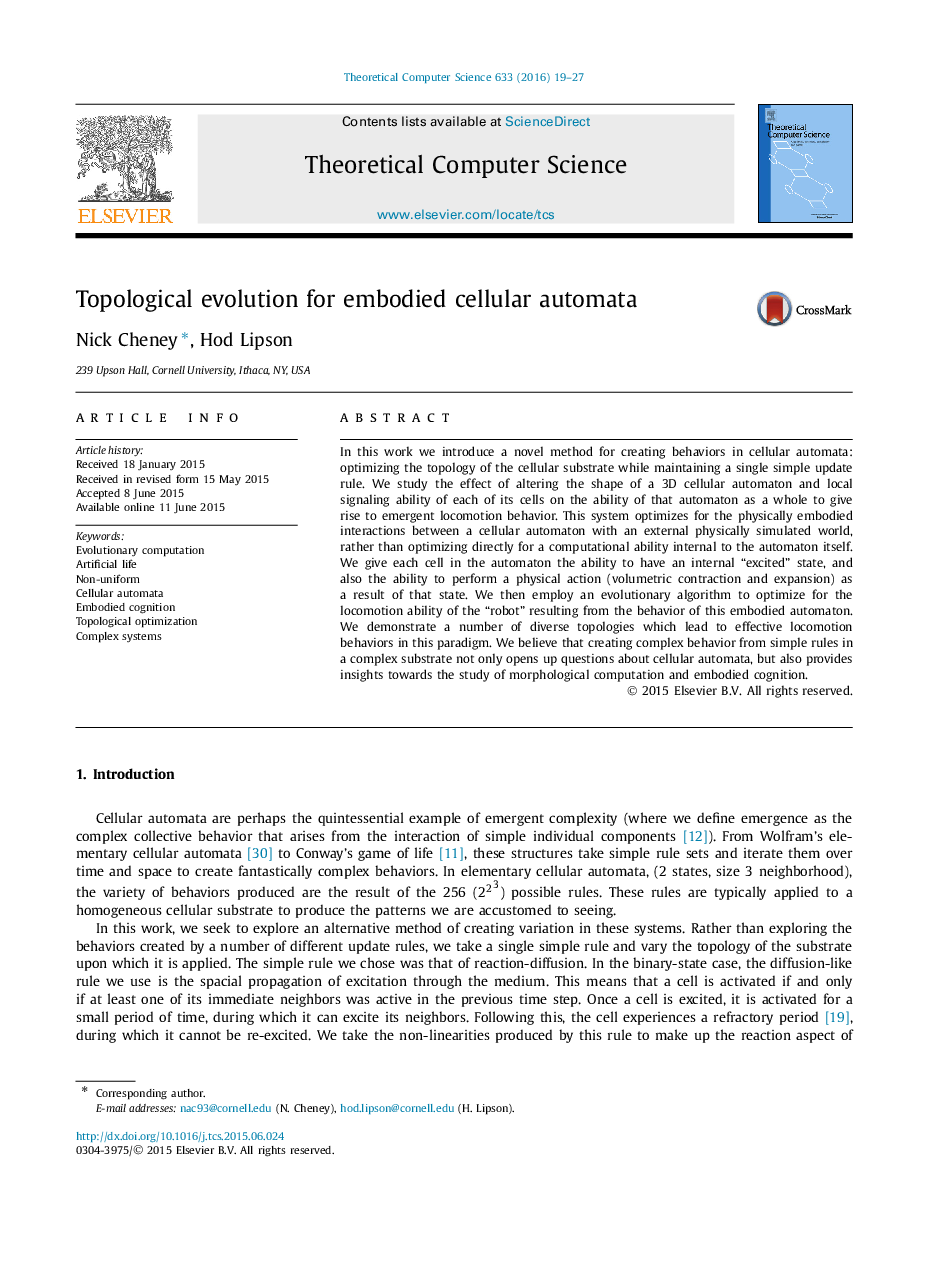| Article ID | Journal | Published Year | Pages | File Type |
|---|---|---|---|---|
| 433655 | Theoretical Computer Science | 2016 | 9 Pages |
•Behavioral variation in CA are traditionally created through various update rules.•Instead, we change behavior through topological variation of the substrate.•The automata of actuated cells are taken to define the morphology of a soft robot.•This morphology is optimized with an evolutionary algorithm to maximize locomotion.•A diversity of effective behaviors and morphologies are demonstrated.
In this work we introduce a novel method for creating behaviors in cellular automata: optimizing the topology of the cellular substrate while maintaining a single simple update rule. We study the effect of altering the shape of a 3D cellular automaton and local signaling ability of each of its cells on the ability of that automaton as a whole to give rise to emergent locomotion behavior. This system optimizes for the physically embodied interactions between a cellular automaton with an external physically simulated world, rather than optimizing directly for a computational ability internal to the automaton itself. We give each cell in the automaton the ability to have an internal “excited” state, and also the ability to perform a physical action (volumetric contraction and expansion) as a result of that state. We then employ an evolutionary algorithm to optimize for the locomotion ability of the “robot” resulting from the behavior of this embodied automaton. We demonstrate a number of diverse topologies which lead to effective locomotion behaviors in this paradigm. We believe that creating complex behavior from simple rules in a complex substrate not only opens up questions about cellular automata, but also provides insights towards the study of morphological computation and embodied cognition.
